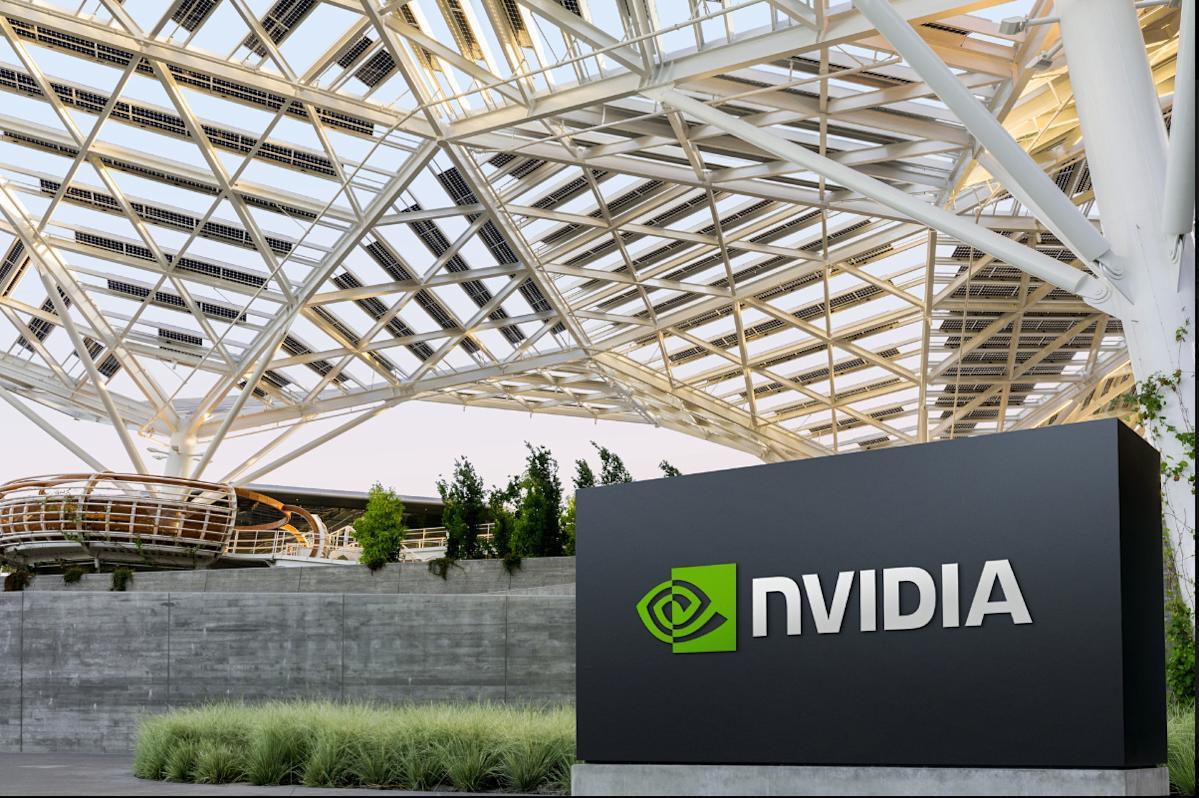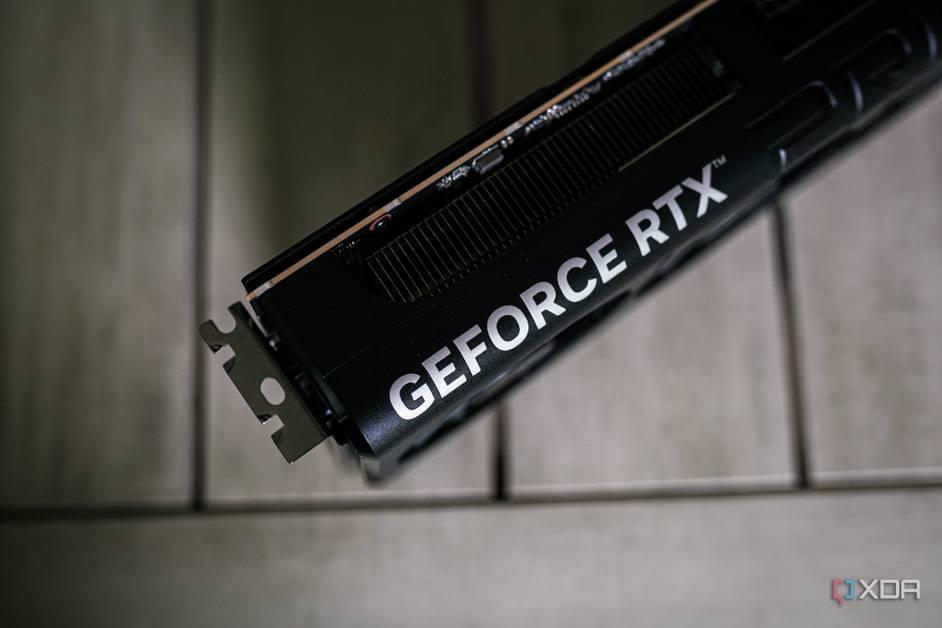Nvidia's AI Dominance Overshadows Gaming GPU Shortages in Record-Breaking Fiscal Year
2 Sources
2 Sources
[1]
Nvidia enjoys $130B annual earnings despite gaming segment 'supply constraints'
Data center brought in 14x as much revenue as the gaming segment last quarter. Nvidia on Wednesday published its financial results for the final quarter of its fiscal 2025 and shared progress of its Blackwell GPU ramp. The company's earnings for the FY2025 exceeded a whopping $130 billion, which is an all-time high for the company. Nvidia's sales of Blackwell GPUs for datacenters also significantly exceeded expectations in Q4 of FY2025. However, the company admitted that it was constrained to meet demand for its gaming products last quarter, which is why sales of GeForce GPUs dropped both sequentially and year-over-year. Nvidia posted revenue of $39.33 billion for Q4 FY2025, marking a 12% sequential increase and a massive 78% year-over-year (YoY) growth. The company's net income achieved $22.091 billion as its gross margins hit 73%, down 3% compared to the same quarter a year ago due to Blackwell ramp as well as production of low-yield Blackwell material in the previous quarter. For the year, Nvidia earned $130.497 billion, up 114% YoY. The company's net income was $72.88 billion and its gross margin was 75%, up 2.3% from 2024. In the final quarter of FY2025, Nvidia's datacenter segment continued to dominate the company's earnings. It generated $35.58 billion, up 16% QoQ and 93% YoY. Compute GPUs accounted for the lion's share of Nvidia's datacenter sales ($32.556 billion), whereas sales of networking products totaled $3.024 billion. Nvidia says that sales of its Blackwell GPUs in the fourth quarter reached $11 billion, significantly more than Nvidia planned. The company indicated that demand for Blackwell GPUs for AI and HPC is overwhelming, which explains significant Blackwell revenue. By contrast, Nvidia's gaming revenue dropped to $2.54 billion, down 22% QoQ and 11% YoY, due to supply constraints as demand remains strong. Considering the fact that Nvidia now uses the same TSMC production lines for AI and gaming GPUs, it is not surprising that the company prioritizes production of expensive AI processors to lower-margin client products. " Full year [gaming] revenue of 11.4 billion increased 9% year-on-year, and demand remains strong throughout the holiday," said Colette Kress, chief financial officer of Nvidia. "However, Q4 shipments were impacted by supply constraints." Still, Nvidia's professional visualization (ProViz) revenue reached $511 million, up 5% QoQ and 10% YoY, and OEM and other contributed $126 million, up 30% QoQ and 40% YoY. The Automotive segment saw the most significant YoY growth at 103%, reaching $570 million (up 27% QoQ), fueled by adoption of Nvidia's platforms by various automakers. For the whole year, Nvidia's revenue totaled $130.5 billion, marking an impressive 114% year-over-year growth compared to $60.9 billion in FY2024. Nvidia's datacenter segment was of course the primary driver, generating $115.2 billion (up 142% YoY), followed by gaming revenue with $11.35 billion (up 9% YoY), ProViz business with $1.88 billion (up 21% YoY), and Automotive with $1.694 billion. OEM and other businesses earned Nvidia $389 million, up 27% YoY. Nvidia projects Q1 FY2026 revenue of $43 billion ±2%, reflecting continued strong demand for AI GPUs for datacenters. Gross margins are expected to be 70.6% due to Blackwell ramp up, which costs Nvidia a lot of money. To support ramp up of Blackwell (both for datacenters and gaming PCs) as well as eventual ramp up of Blackwell Ultra (B300-series), Nvidia has to pre-purchase production capacity. As of the end of FY2025, Nvidia's purchase commitments and obligations for inventory and production capacity were $30.8 billion, including new capacity commitments and components for rackscale and other solutions. Supply and capacity prepayments were $5.1 billion.
[2]
Nvidia gaming GPUs an afterthought as AI generates mountains of cash -- RTX 50-series shortages mentioned, not explained
Nvidia just announced its fourth-quarter earnings, hitting a record full-year revenue of $130.5 billion -- a 114% year-over-year increase owing to the high demand for its AI chips. But despite its massive sales growth, many gamers and enthusiasts feel they're being ignored, especially as the company only mentioned the RTX 50-series shortage but did not explain why it was happening nor say how it was dealing with the problem. Team Green's bread and butter used to be gaming GPUs, with the segment making up most of its sales until 2022. However, the launch of ChatGPT made artificial intelligence more accessible to the public, and many tech companies started spending billions of dollars to buy the hardware needed to train these models -- such as the data center GPUs that Nvidia makes. Because of this massive demand, the company soon became the world's most valuable by market capitalization. Nvidia's data center business grew from $10.61 billion in December 2021, which accounted for 39.43% of its revenue, to a whopping $115.19 billion some three years later, making up 88.27% of sales. In comparison, its gaming GPU business shrunk to $11.35 billion and 8.7% from $12.46 billion and 46.31% of the revenue share in the same time frame. Given that the company is hitting these record numbers, especially in the data center side of its business, it doesn't quite make sense why we're experiencing several problems with the RTX 50-series GPUs. Aside from the lack of supply, with one retailer saying that it could take up to 16 weeks to fulfill pre-orders, there's also the melting power connector issue making a comeback with the RTX 5090, missing ROPs, and even BSOD and black screen issues (which, thankfully, have just been addressed with a driver update). While it's understandable that its AI business is where the money is at right now, it's just frustrating to many people why Nvidia could not prepare for the massive demand that its RTX 50-series GPUs had upon launch. The chip shortages during the launch of the RTX 30-series and RTX 40-series GPUs were explained by the global supply chain crisis brought by the COVID-19 pandemic. But with silicon supply chains relatively stable right now, one cannot help but wonder why Nvidia isn't just making enough chips for the consumer side of its business. At the very least, it should have anticipated and manufactured enough chips to avoid the shortage that we're experiencing now -- which it can definitely afford to do. After all, if there's an abundance of RTX 50 series GPUs, then we don't have to resort to lining up for hours (if not days) at retailers, joining lotteries just to get the opportunity to spend money, or dealing with scalpers that are selling its products for twice or even thrice the MSRP. It's great that Nvidia is flush with so much cash right now from its data center business that it could afford to spend more on research and development. However, it's disappointing millions of its core fan base because many feel that the company no longer prioritizes PC gamers, especially with the botched launch of the RTX 50-series.
Share
Share
Copy Link
Nvidia reports staggering $130.5 billion annual revenue, driven by AI chip demand, while facing criticism for gaming GPU shortages and quality issues.

Nvidia's Record-Breaking Financial Performance
Nvidia has reported extraordinary financial results for its fiscal year 2025, with annual earnings reaching a staggering $130.5 billion, marking a 114% year-over-year increase
1
. The company's fourth-quarter revenue alone hit $39.33 billion, up 78% from the previous year1
. This unprecedented growth is primarily attributed to the surging demand for Nvidia's AI chips in the data center segment.AI Dominance Drives Revenue
The data center business has become Nvidia's primary revenue generator, contributing a whopping $115.19 billion to the annual revenue, which accounts for 88.27% of total sales
2
. This segment saw a remarkable 142% year-over-year growth1
. The demand for Nvidia's Blackwell GPUs for AI and high-performance computing (HPC) has been particularly strong, with Q4 sales reaching $11 billion, significantly exceeding expectations1
.Gaming Segment Faces Challenges
While Nvidia's overall performance has been stellar, its gaming segment has faced some setbacks. Gaming revenue for Q4 FY2025 dropped to $2.54 billion, down 22% quarter-over-quarter and 11% year-over-year
1
. The company attributed this decline to supply constraints, despite strong demand for its products1
. This situation has led to frustration among gamers and enthusiasts, who feel overlooked as Nvidia prioritizes its booming AI business2
.RTX 50-Series Launch Issues
The launch of Nvidia's RTX 50-series GPUs has been marred by several problems:
- Supply shortages: Some retailers report up to 16-week wait times for pre-orders
2
. - Hardware issues: The RTX 5090 has experienced melting power connector problems
2
. - Performance concerns: There have been reports of missing ROPs and BSOD issues, though the latter has been addressed with a driver update
2
.
These issues have left many questioning why Nvidia, with its substantial resources, couldn't better prepare for the high demand and ensure product quality
2
.Shift in Revenue Distribution
Nvidia's revenue composition has dramatically shifted over the past three years. In December 2021, the data center business accounted for 39.43% of revenue ($10.61 billion), while gaming made up 46.31% ($12.46 billion)
2
. The current figures show a complete reversal, with data center now dominating at 88.27% and gaming reduced to 8.7% of total revenue2
.Related Stories
Future Outlook and Investments
Looking ahead, Nvidia projects Q1 FY2026 revenue of $43 billion (±2%), indicating continued strong demand for AI GPUs
1
. To support the ramp-up of Blackwell GPUs for both data centers and gaming PCs, Nvidia has committed $30.8 billion for inventory and production capacity, including $5.1 billion in supply and capacity prepayments1
.Industry Impact and Concerns
Nvidia's success in the AI chip market has propelled it to become the world's most valuable company by market capitalization
2
. However, this shift has raised concerns among its traditional customer base of PC gamers and enthusiasts. Many feel that Nvidia is neglecting its roots in gaming GPUs, prioritizing the more lucrative AI market at the expense of product availability and quality for consumers2
.As Nvidia continues to ride the wave of AI-driven growth, balancing the demands of its burgeoning data center business with the needs of its dedicated gaming community remains a significant challenge for the company.
References
Summarized by
Navi
Related Stories
Nvidia's Q2 FY2026 Results: Record-Breaking $46.7B Revenue Driven by AI Boom and Gaming Success
29 Aug 2025•Technology

NVIDIA Reports Strong Gaming Revenue Amid GPU Shortage and Hints at Next-Gen RTX 50 Series
22 Nov 2024•Business and Economy

Nvidia's Stock Tumbles Despite Record Profits as AI Chip Demand Slows
29 Aug 2024

Recent Highlights
1
Google launches Gemini 3 Flash as default AI model, delivering speed with Pro-grade reasoning
Technology

2
OpenAI launches GPT Image 1.5 as AI image generator war with Google intensifies
Technology

3
OpenAI launches ChatGPT app store, opening doors for third-party developers to build AI-powered apps
Technology





